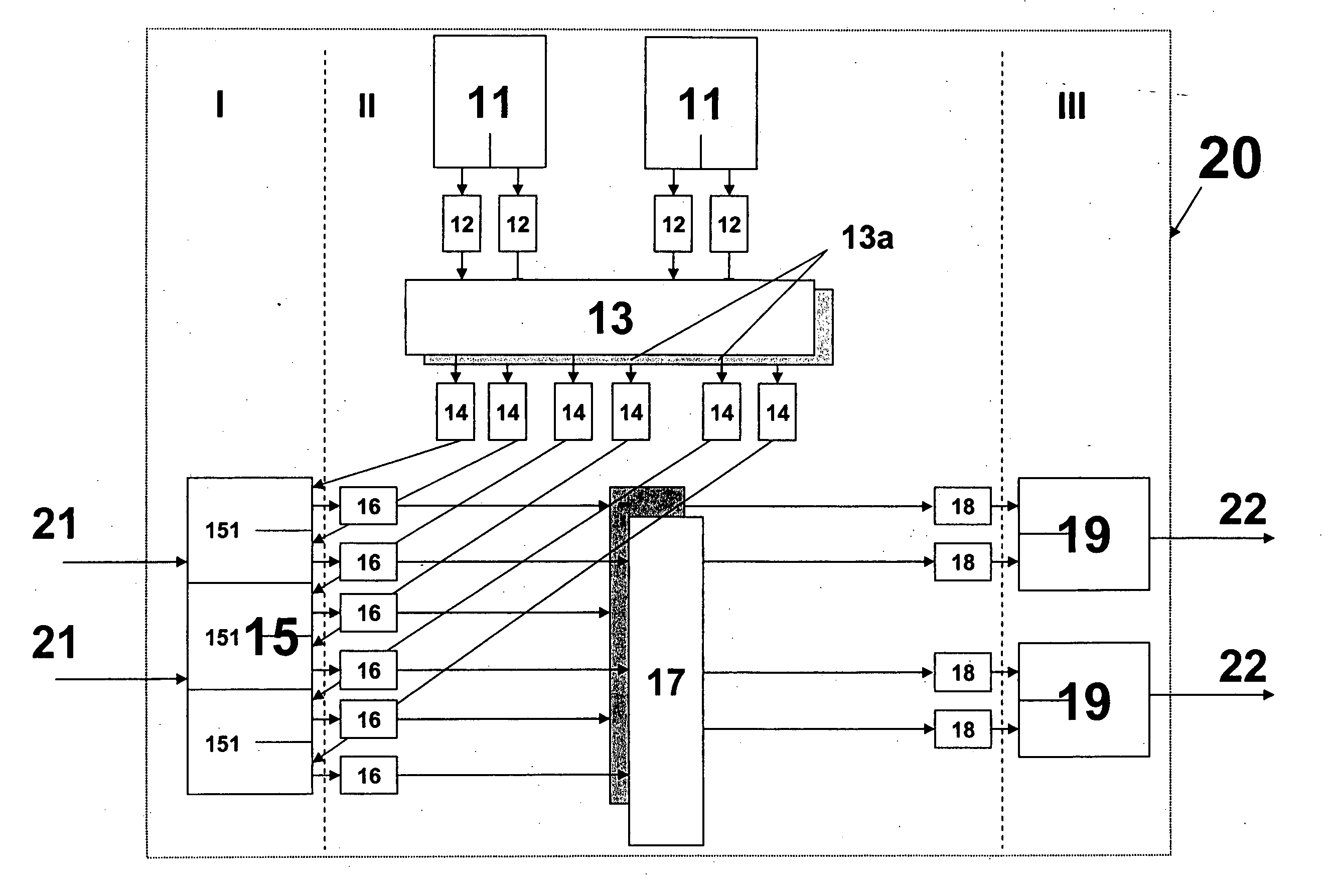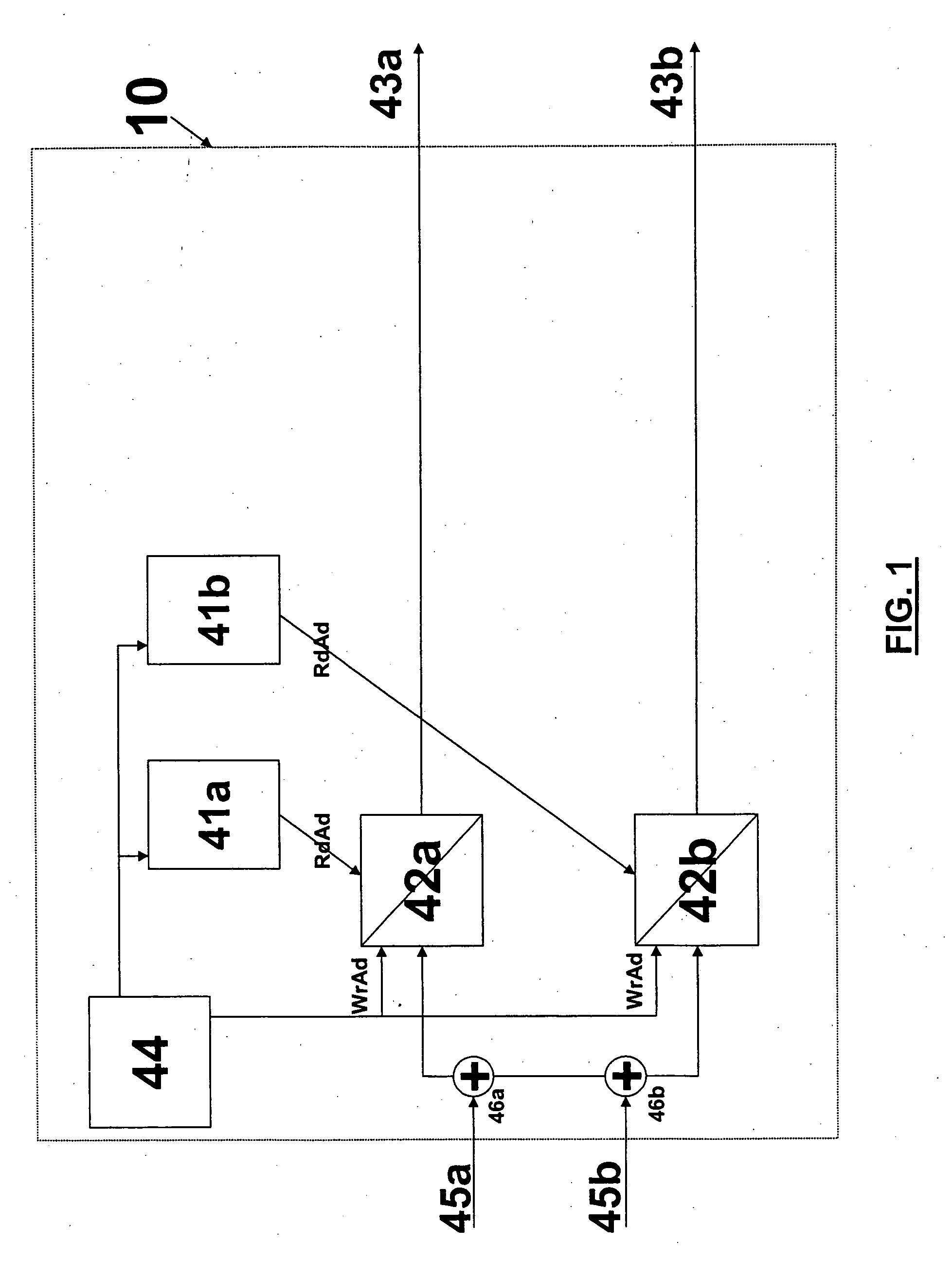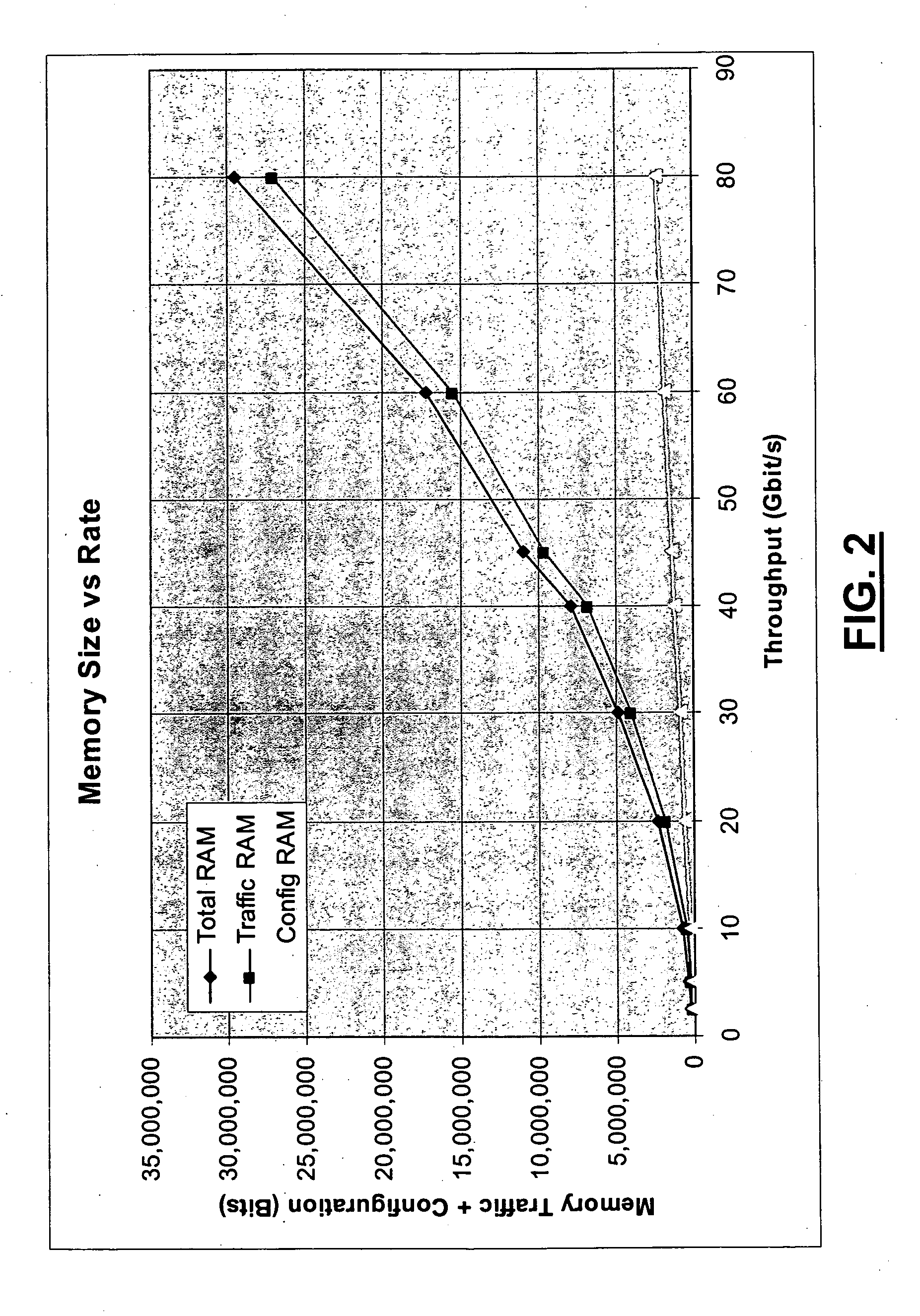Self-steering Clos switch
a switch and self-steering technology, applied in the field of clos switch architecture, can solve the problems of large memory requirements, difficult to build, and high construction costs of large-scale switches, and achieve the effects of avoiding the very large amount of memory, reducing the cost of construction, and reducing the size of switches
- Summary
- Abstract
- Description
- Claims
- Application Information
AI Technical Summary
Benefits of technology
Problems solved by technology
Method used
Image
Examples
Embodiment Construction
[0034]FIG. 1 is a schematic drawing of a conventional square switch architecture. For simplicity, switch 10 is shown as having two input ports 45a, 45b, and two output ports 43a, 43b, although typically many more input and output ports are used. Because switch 10 is a square switch, it is nonblocking, and information entering the switch from any port (45a, 45b) can be output at any port (43a, 43b) without restriction. Using time division multiplexing, a continuous stream of information arrives at the two inputs 45a, 45b in a repeating frame structure, each frame containing hundreds or thousands of channels. In a typical model in a telecommunication system operating on an eight kilohertz cycle, a frame of data is received every 125 microseconds.
[0035] The information stream arriving at ports 45a, 45b is written into the two memories, 42a, 42b, respectively, in basically linear ascending order. At the start of every switching period (typically 125 microseconds or some fraction thereo...
PUM
 Login to View More
Login to View More Abstract
Description
Claims
Application Information
 Login to View More
Login to View More - R&D
- Intellectual Property
- Life Sciences
- Materials
- Tech Scout
- Unparalleled Data Quality
- Higher Quality Content
- 60% Fewer Hallucinations
Browse by: Latest US Patents, China's latest patents, Technical Efficacy Thesaurus, Application Domain, Technology Topic, Popular Technical Reports.
© 2025 PatSnap. All rights reserved.Legal|Privacy policy|Modern Slavery Act Transparency Statement|Sitemap|About US| Contact US: help@patsnap.com



